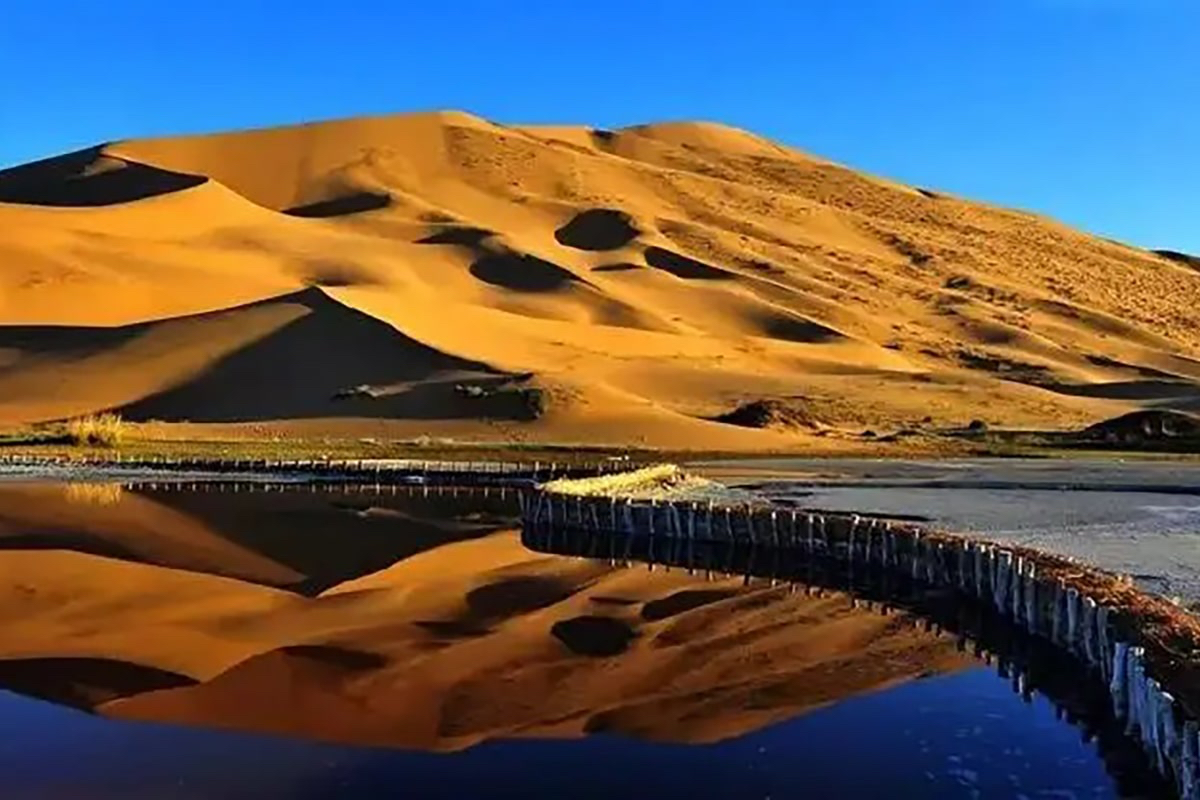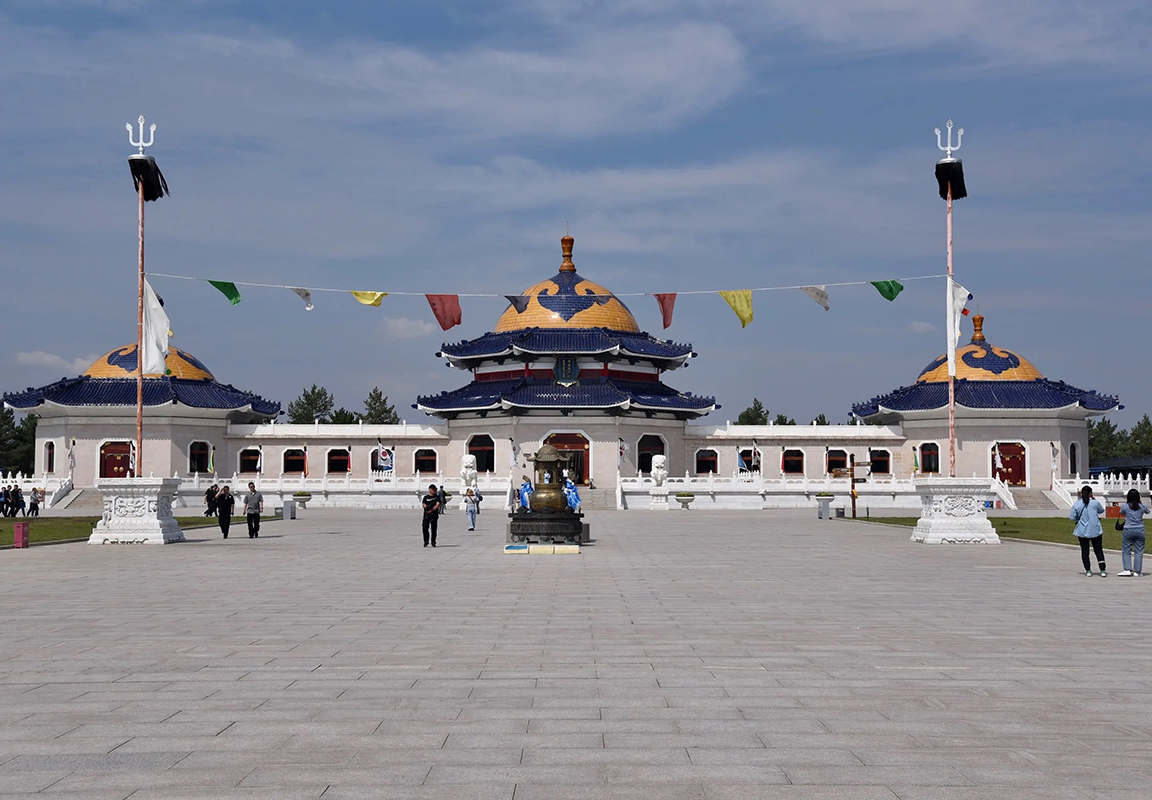
Badain Jaran Desert
This desert land ranks the third largest in China and fourth largest in the world, covering an area of 47,000 square kilometers, almost the size of Denmark. It is located in the south-central part of Inner Mongolia Autonomous Region and the North of the Hexi corridor in Gansu. With picturesque lakes and singing dunes, it is a tourists’ hot-spot and an ideal place for adventurists.

The Tomb of Genghis Khan
Historians and academic society have argued for centuries about the exact location of the burial site of the great Mongol leader Genghis Khan. The true burial site of Genghis Khan, who was buried in a secret, remains a mystery to this day. His tomb should be an unmarked tomb according to Genghis Khan’s will. To make maters worse, he ordered to kill all personnel who were involved in the construction of the burial site. The current on standing in Inner Mongolia was built in middle of 1950s. Despite of all controversy and historical discrepancy, Mongol people still view this place as sacred.